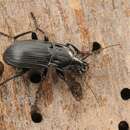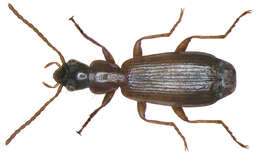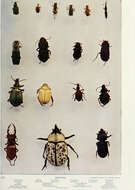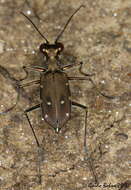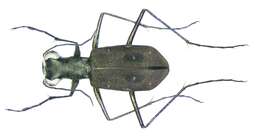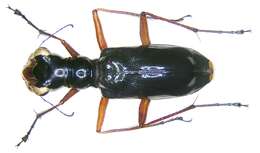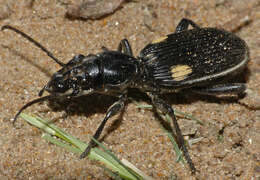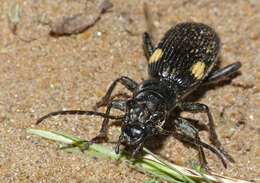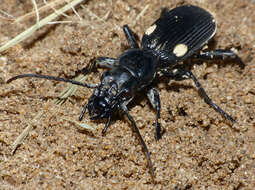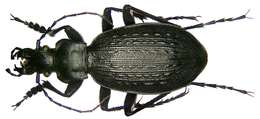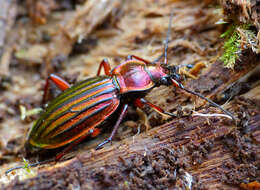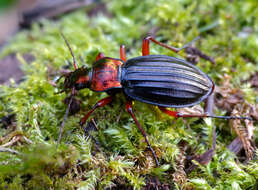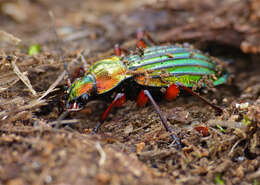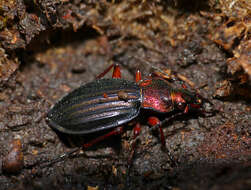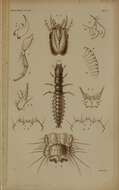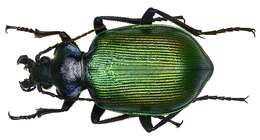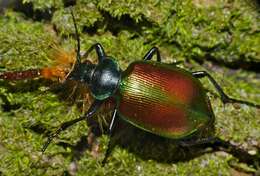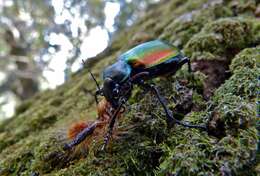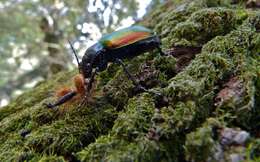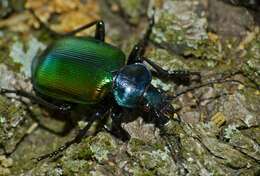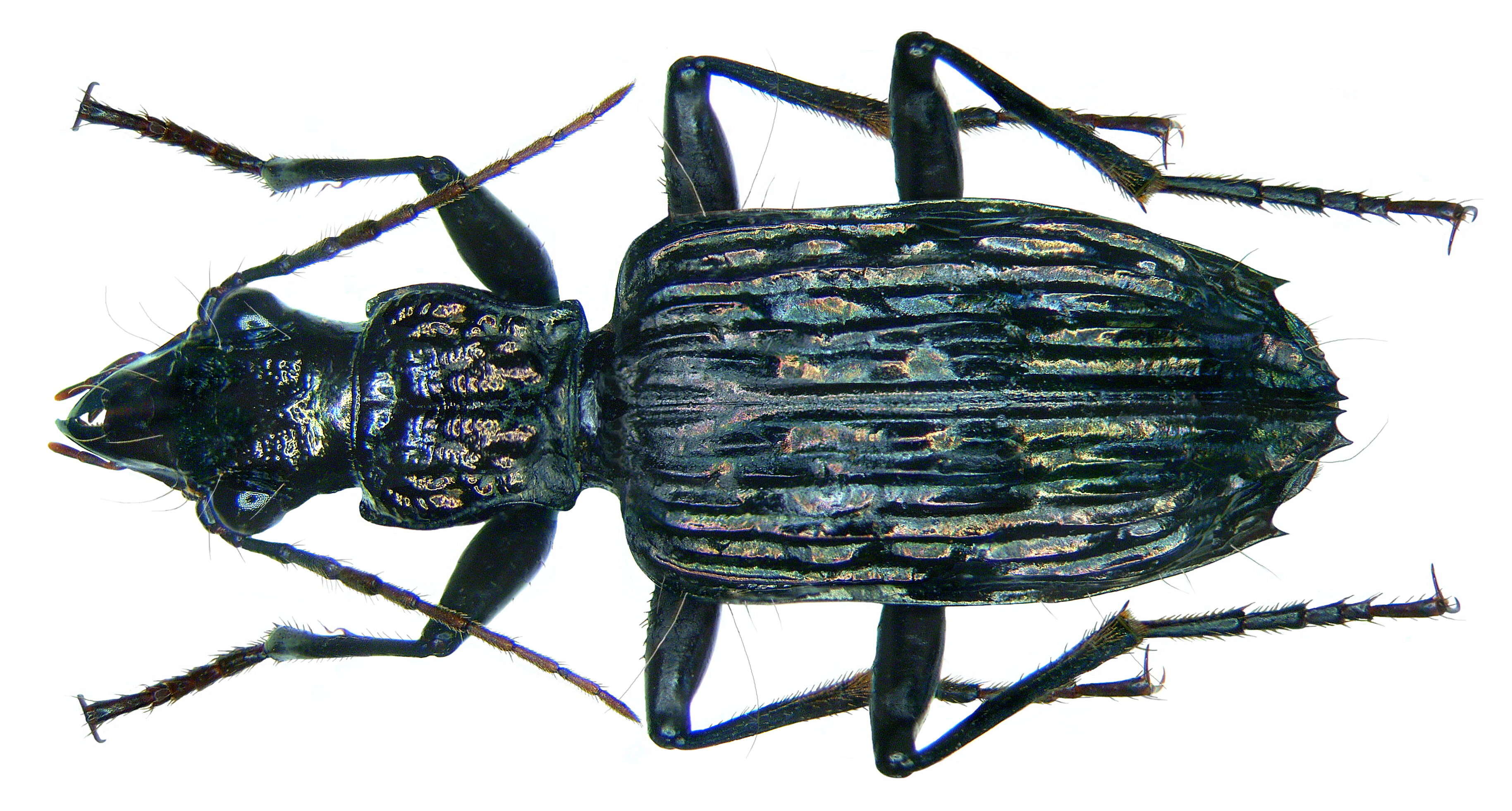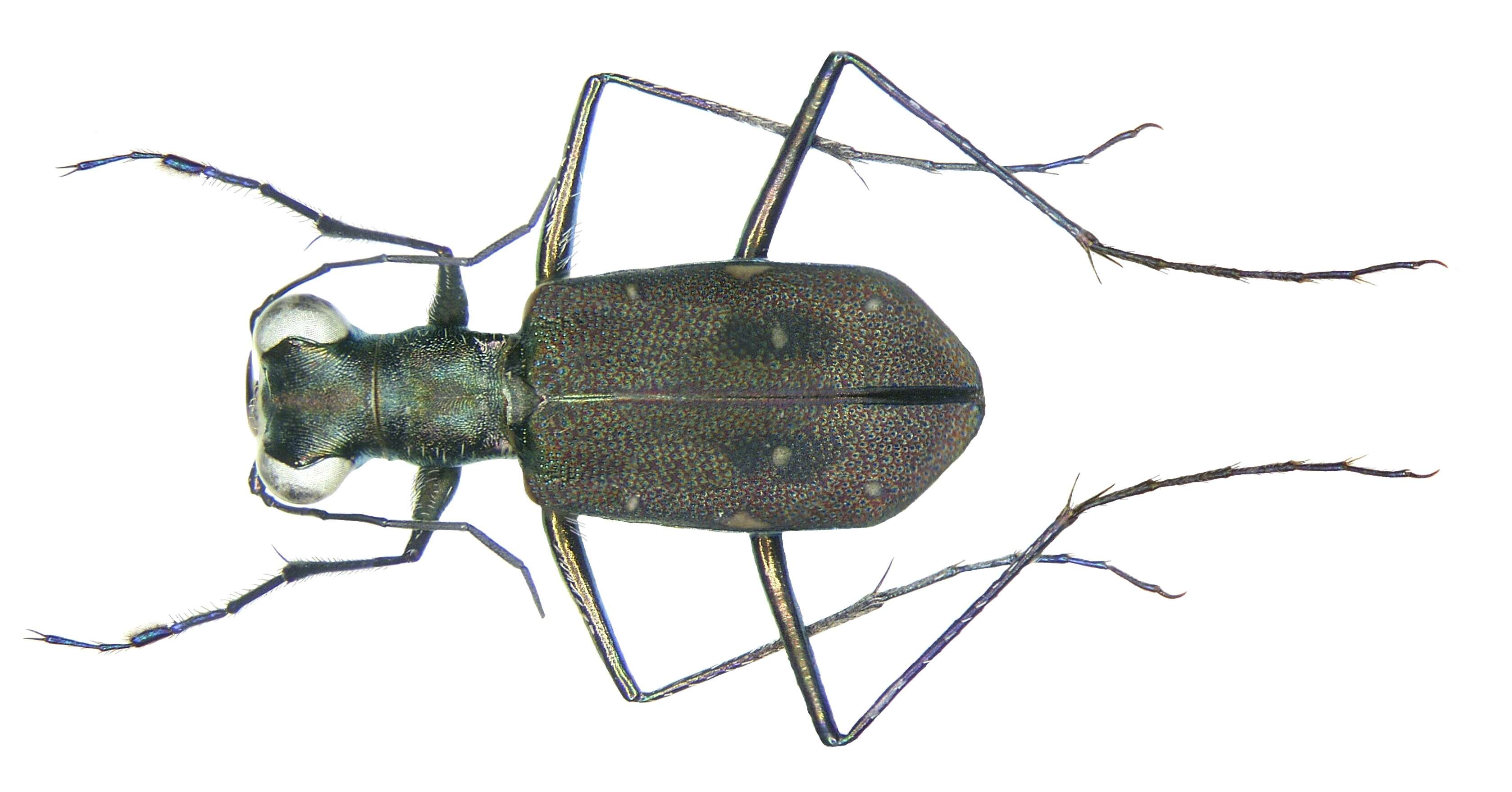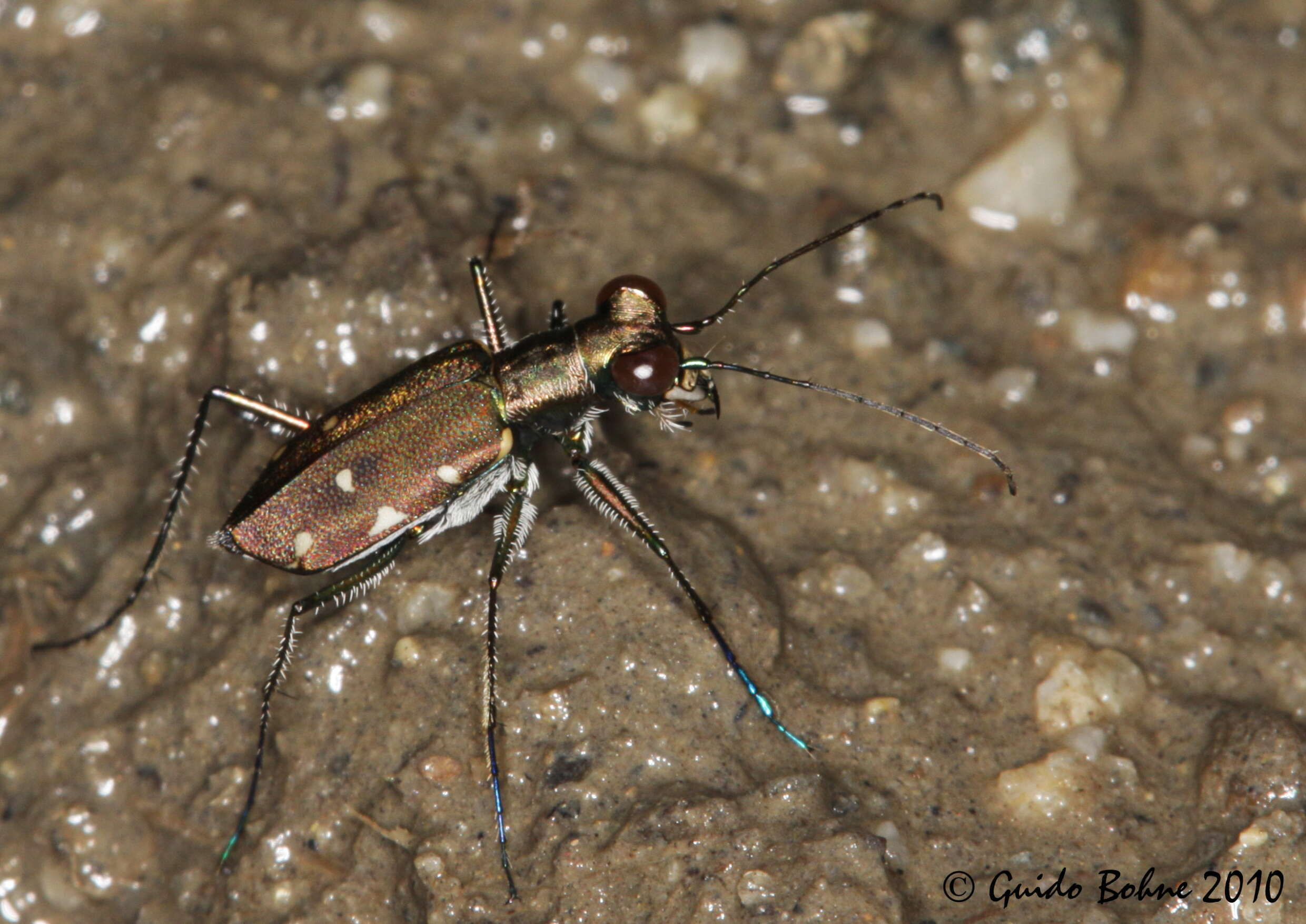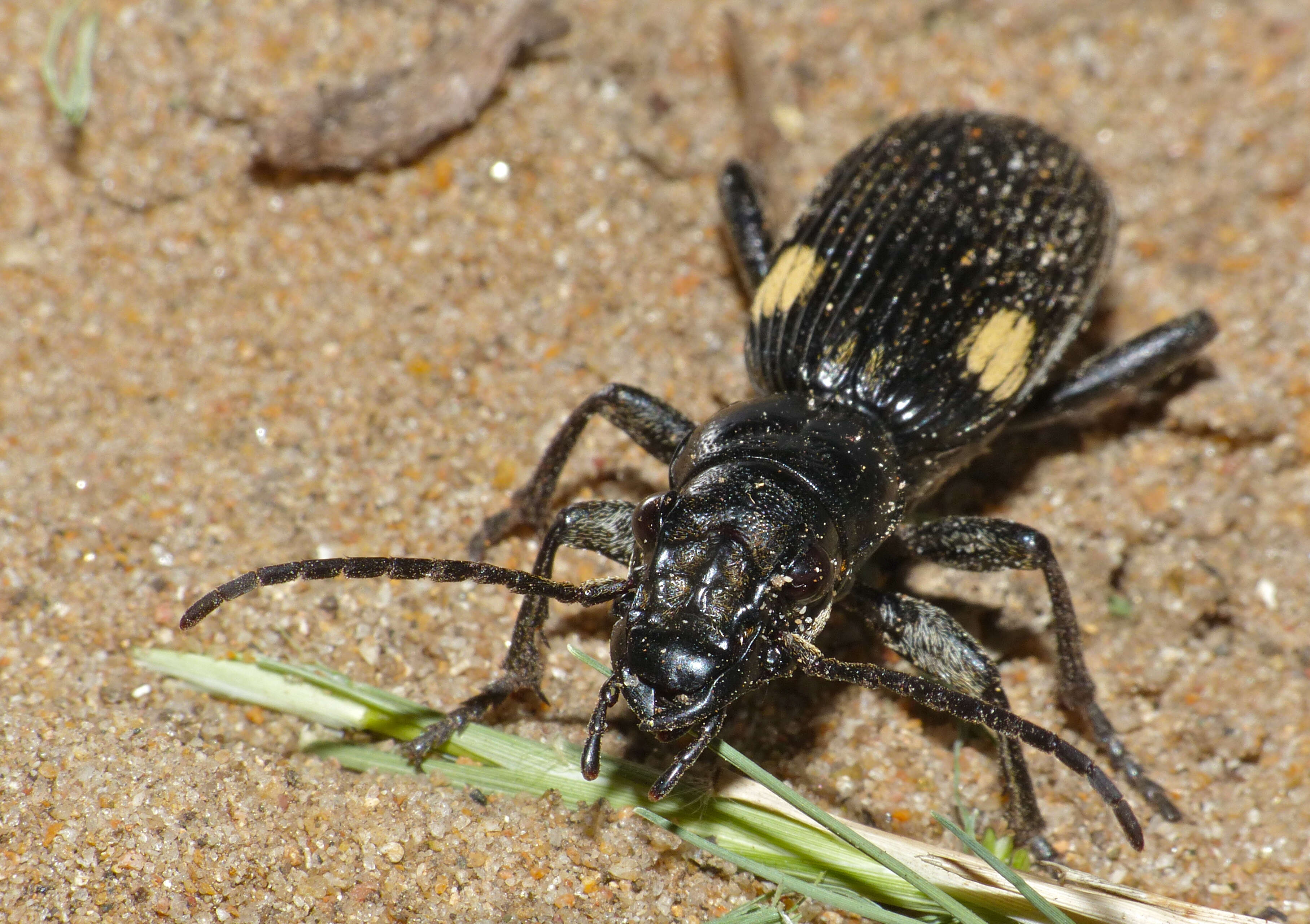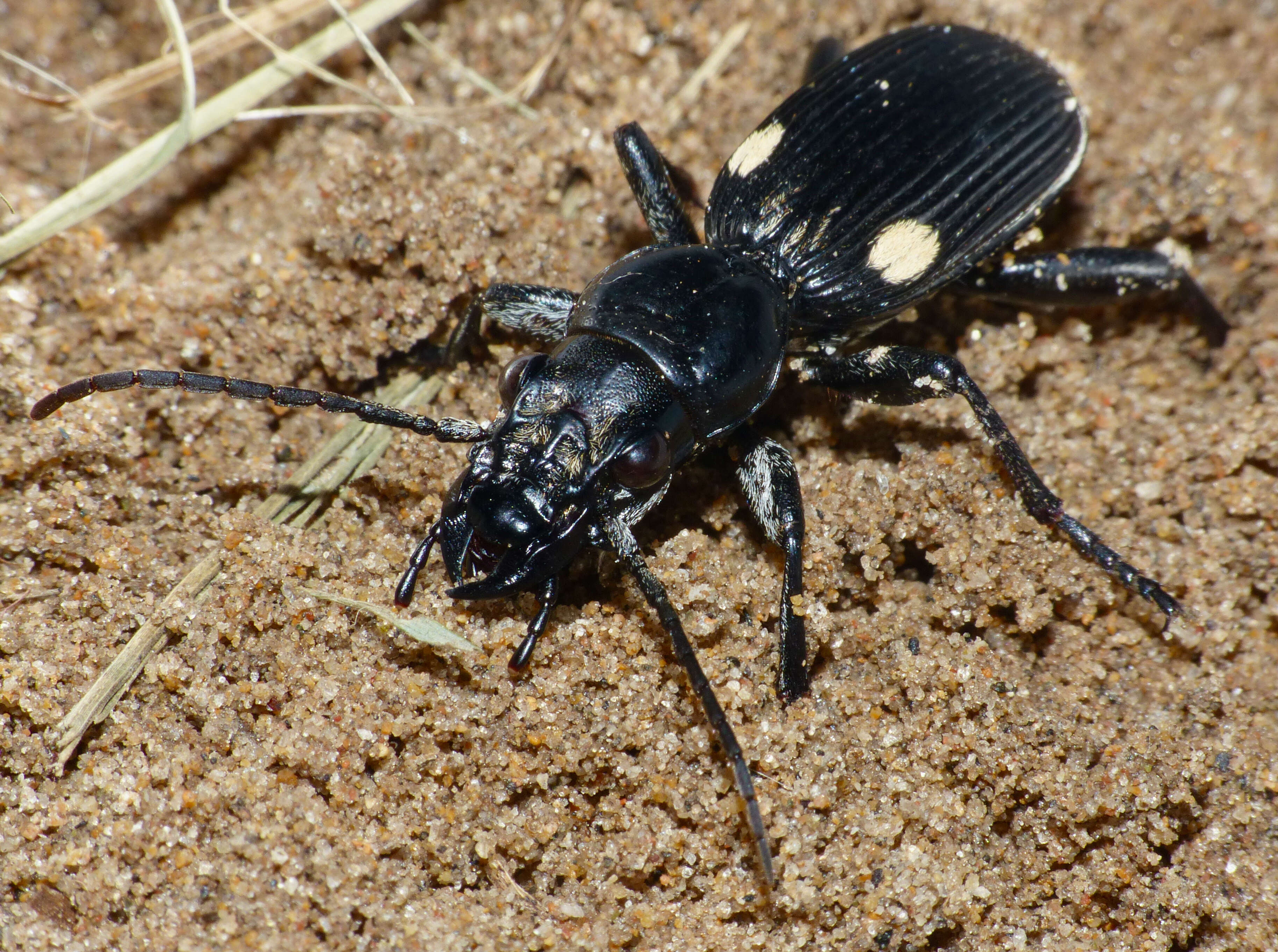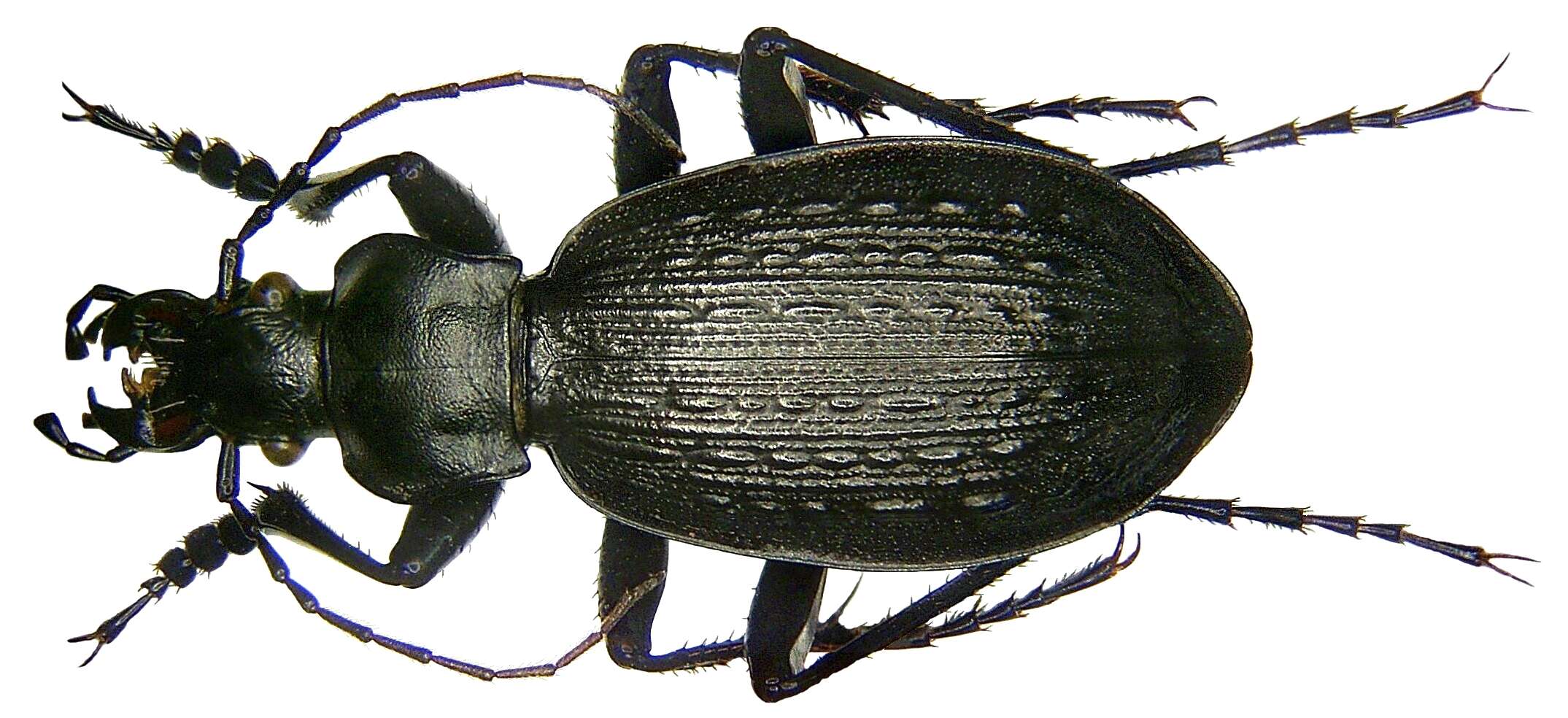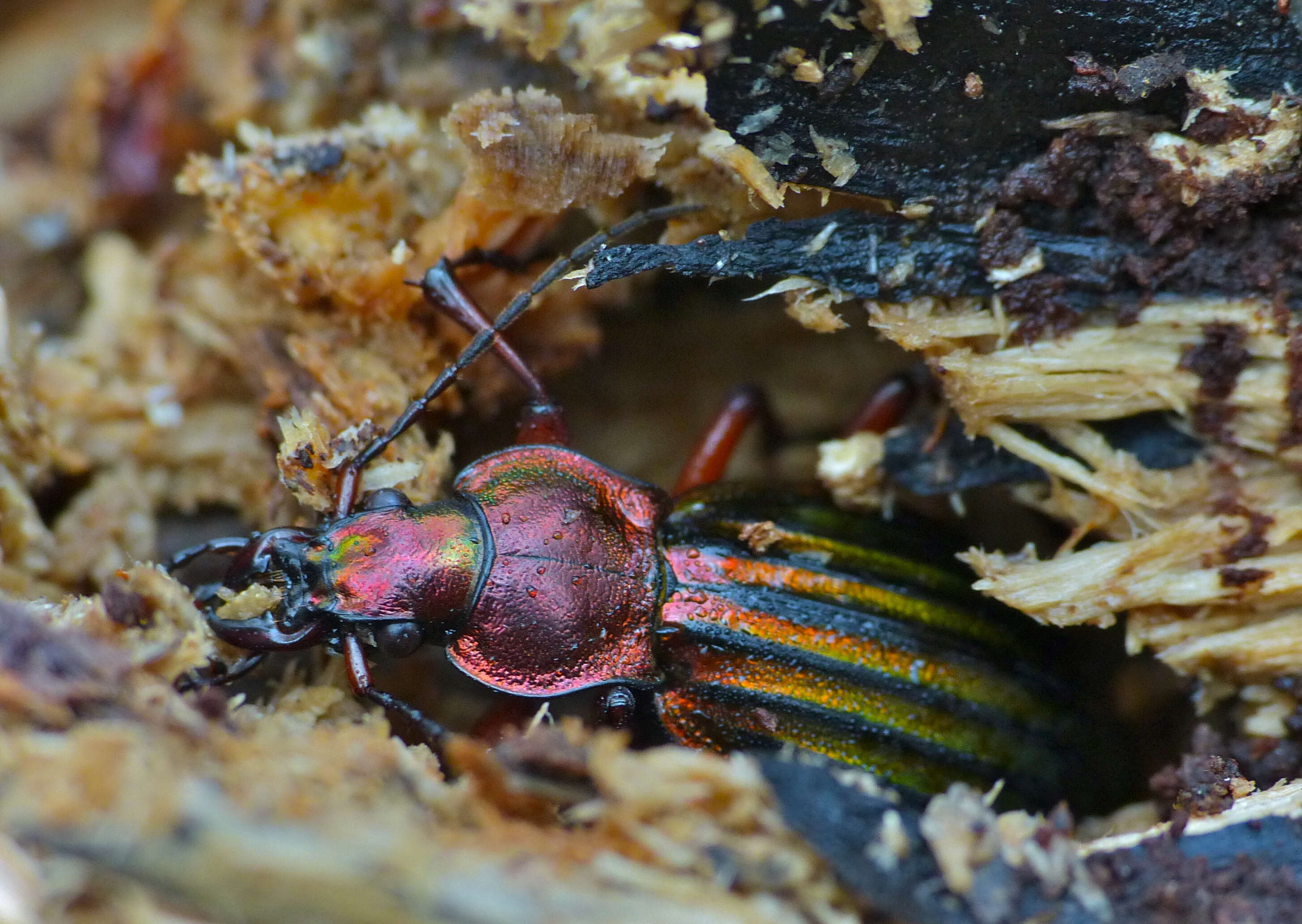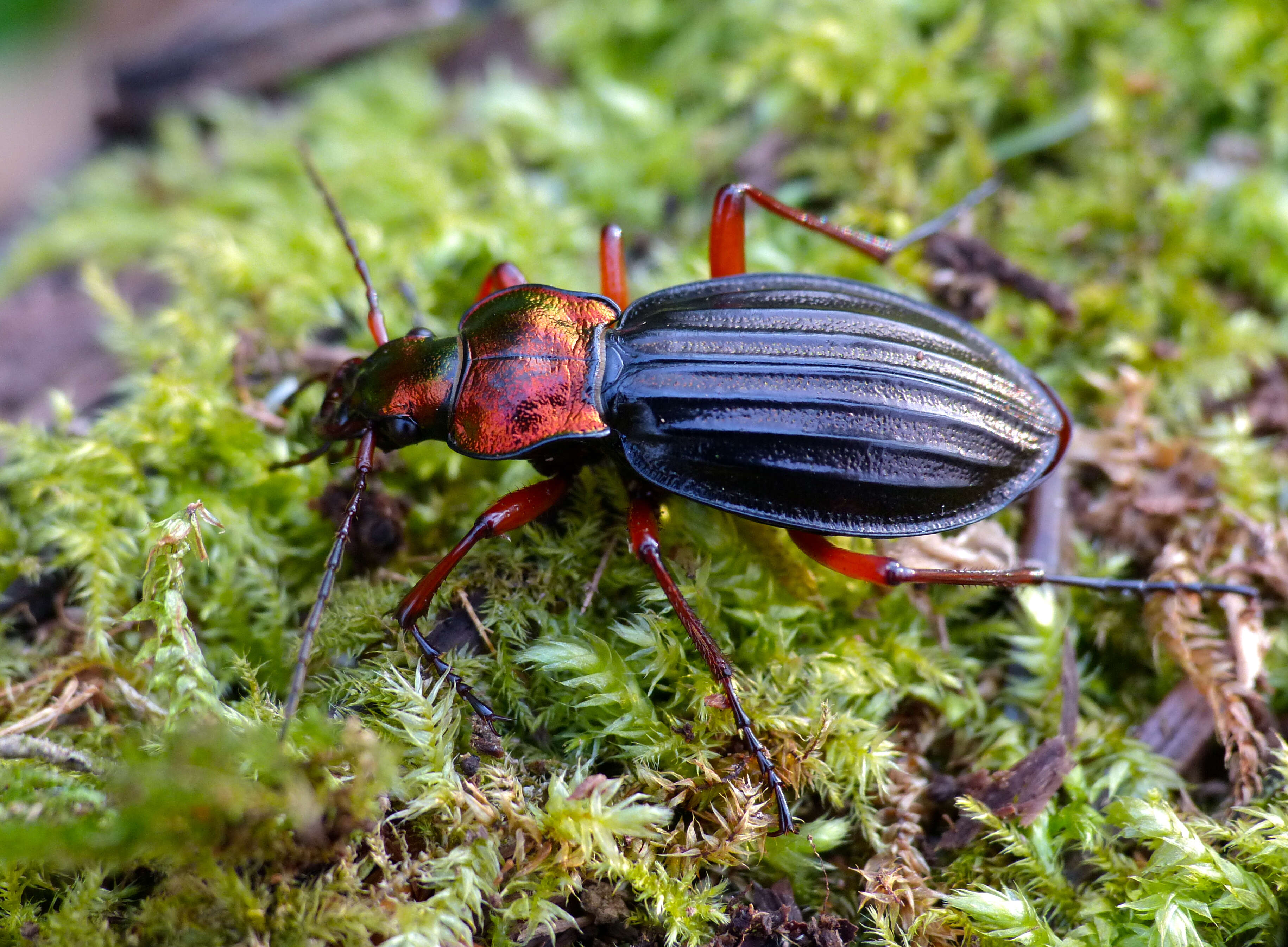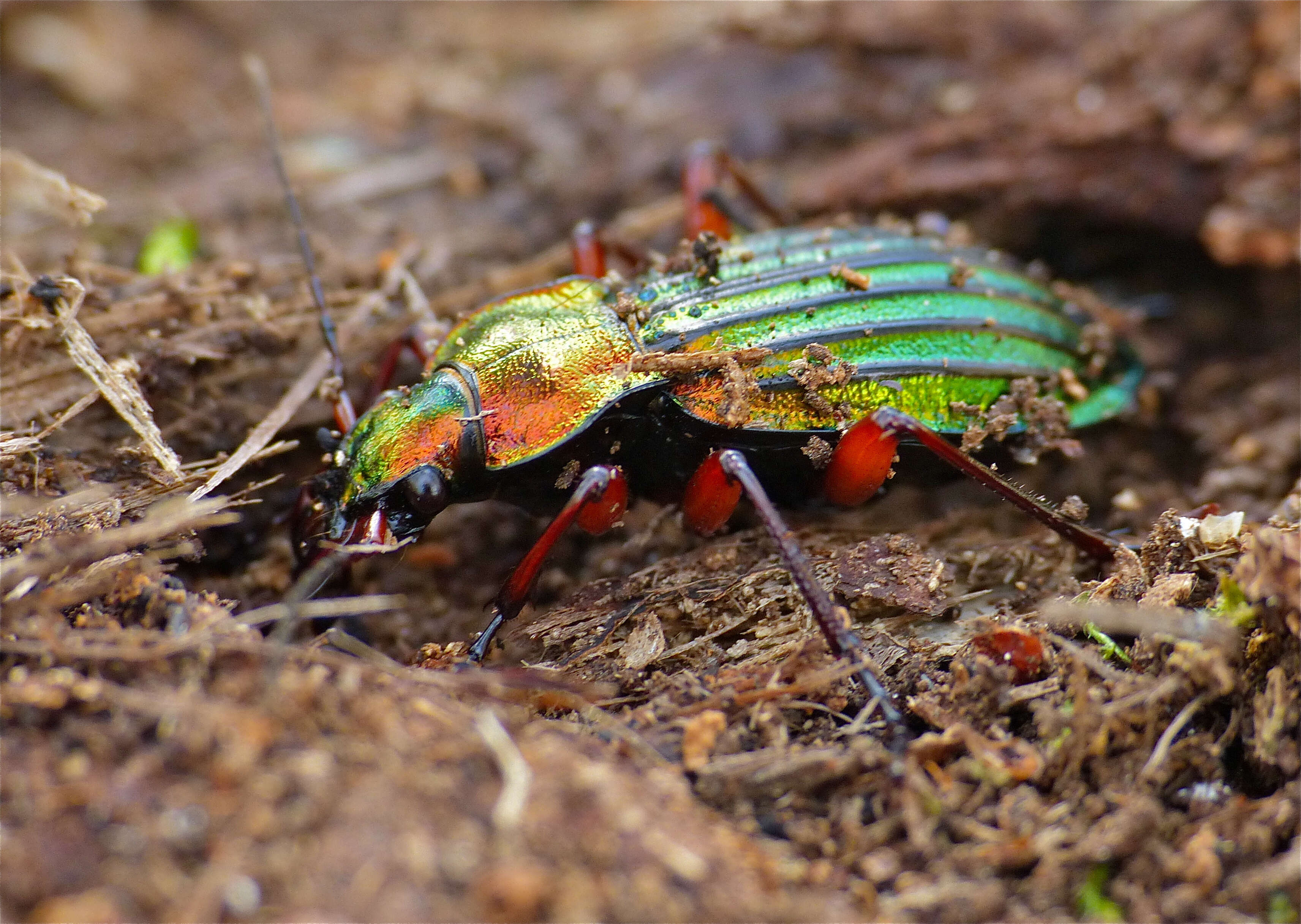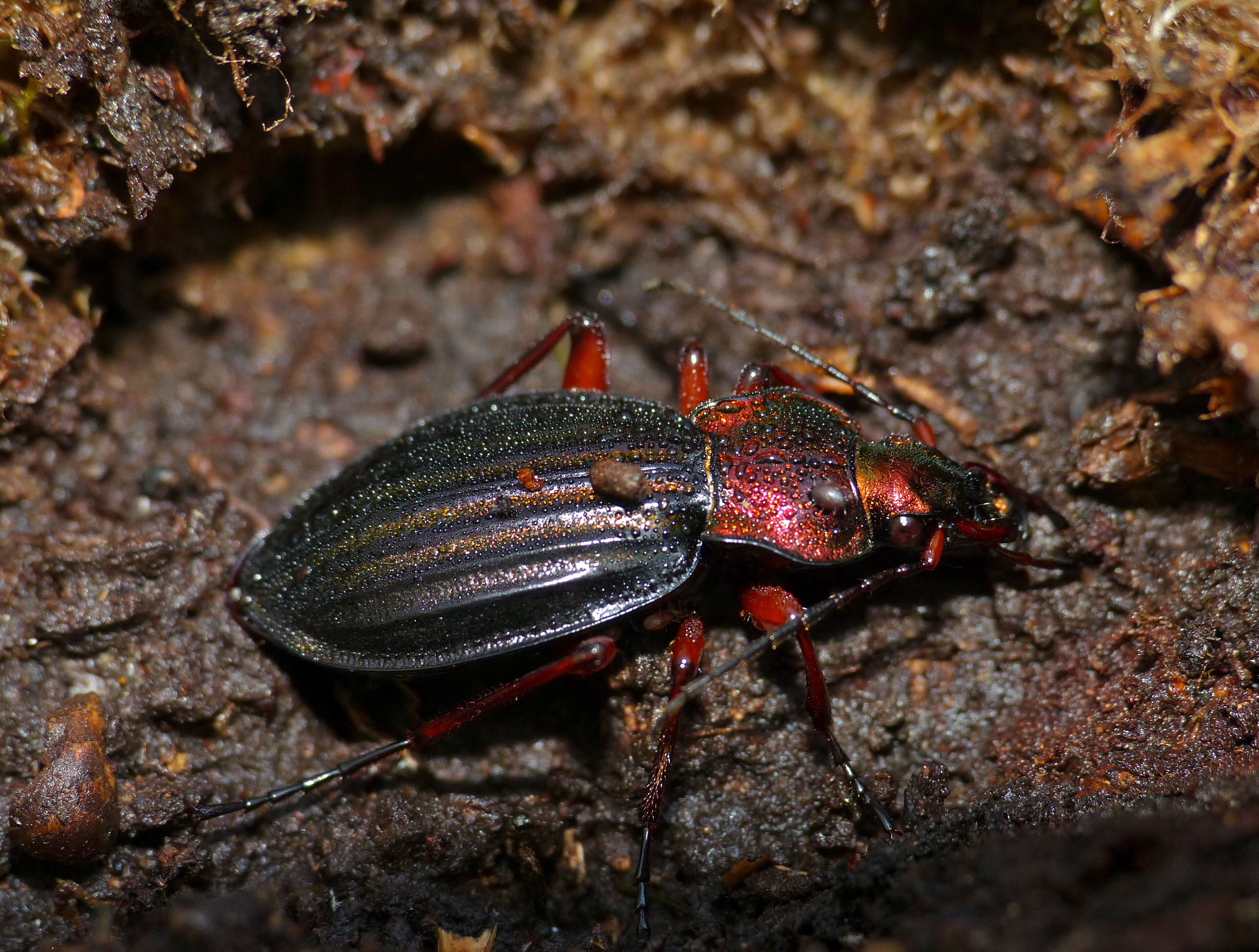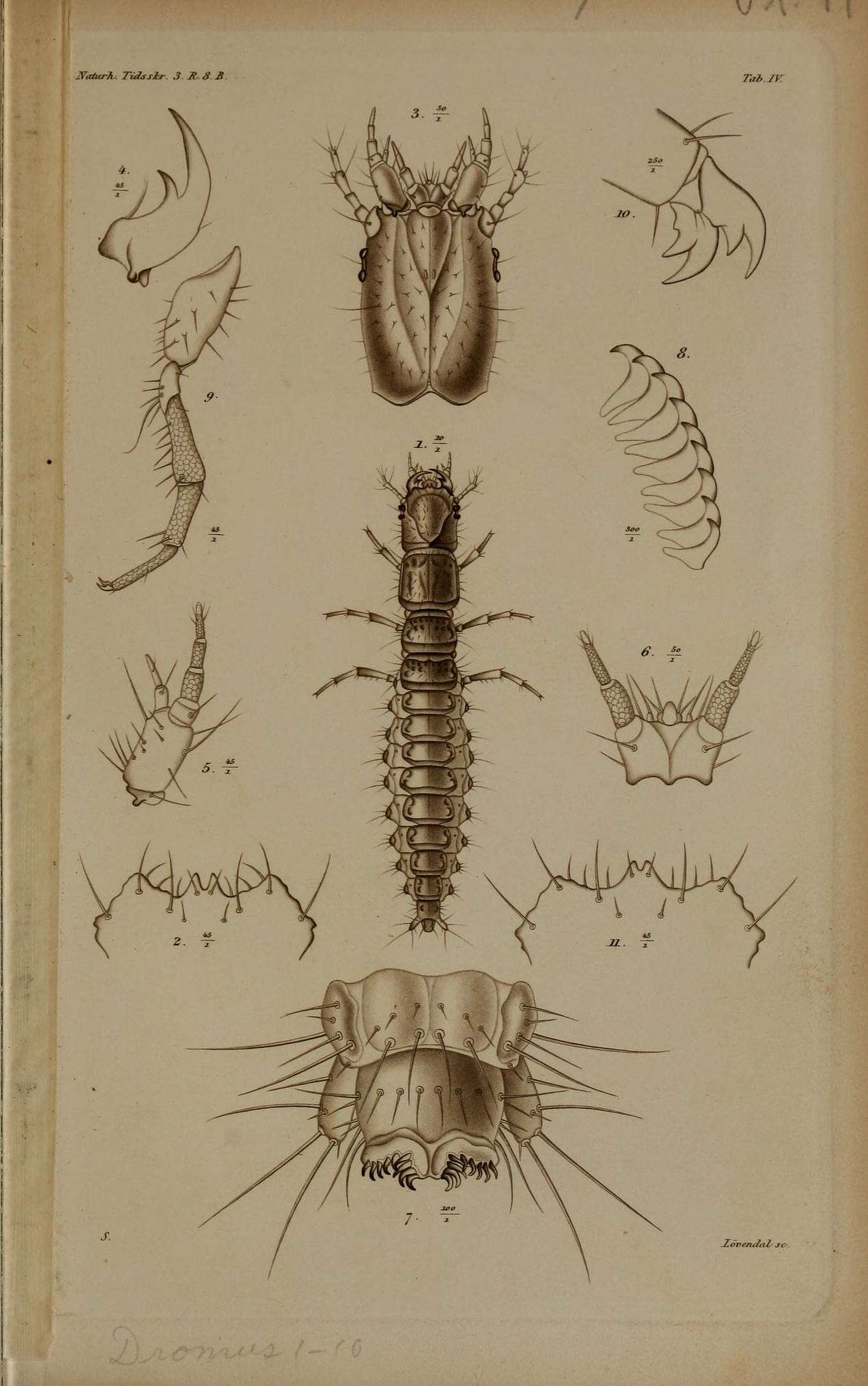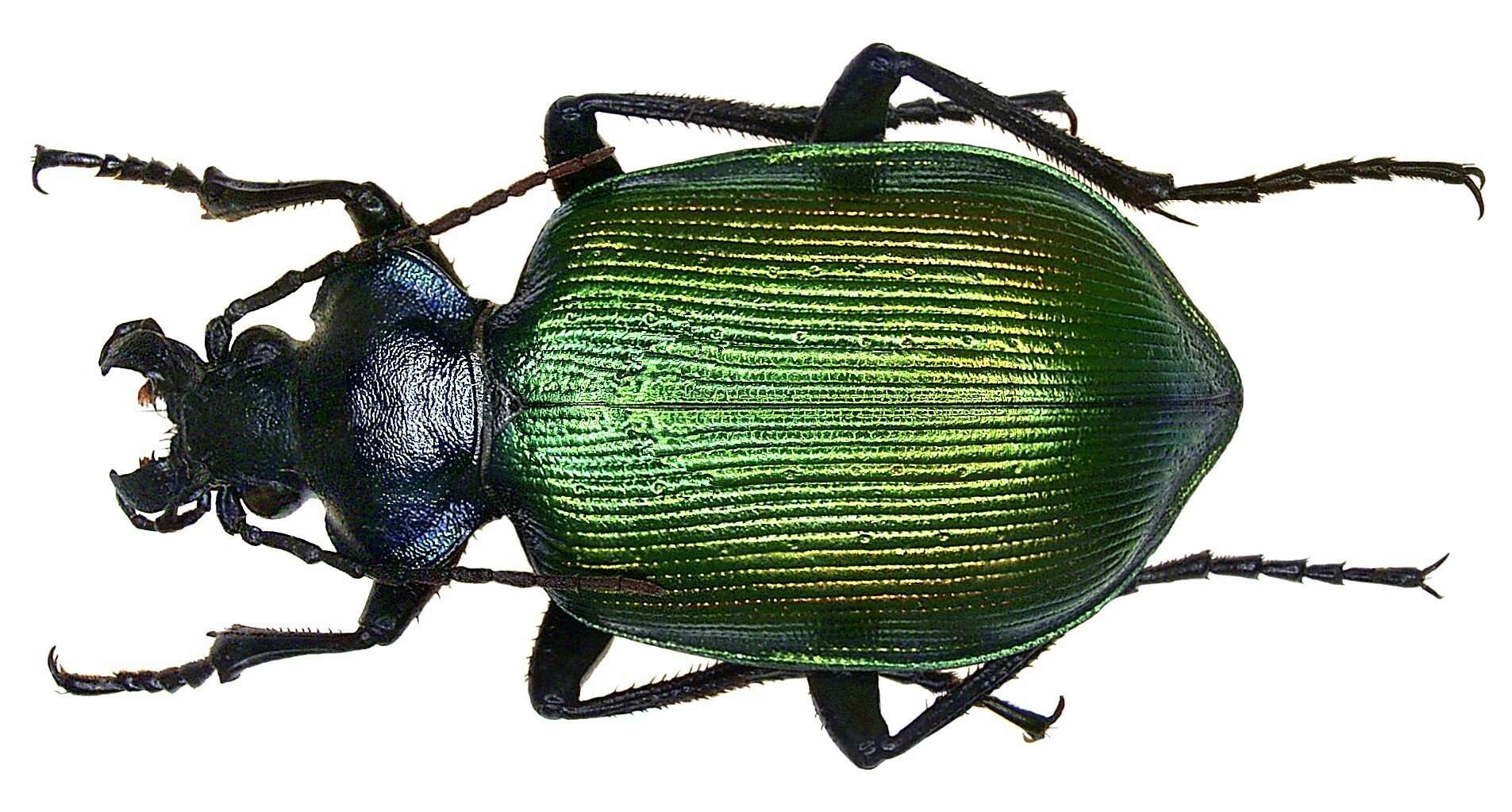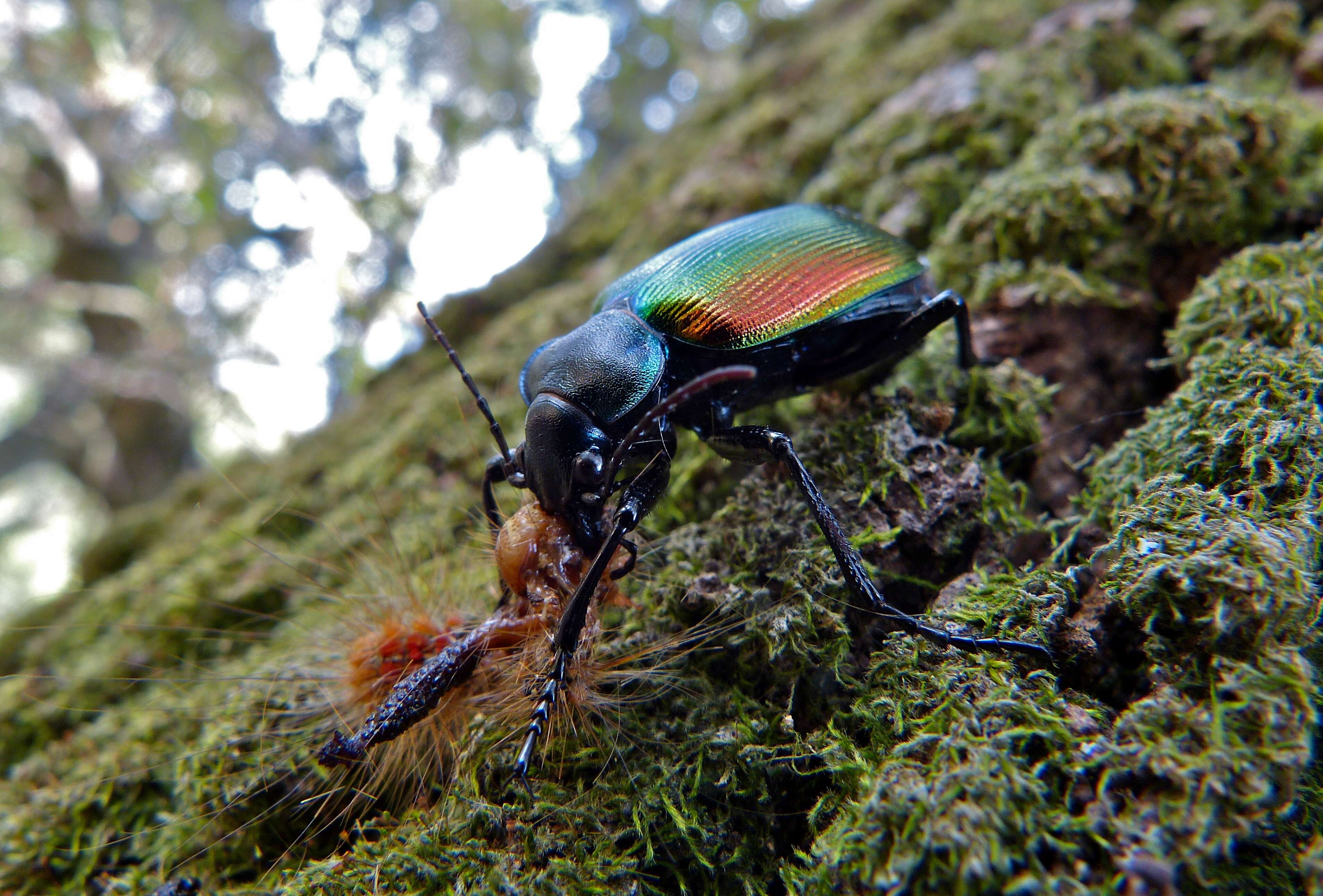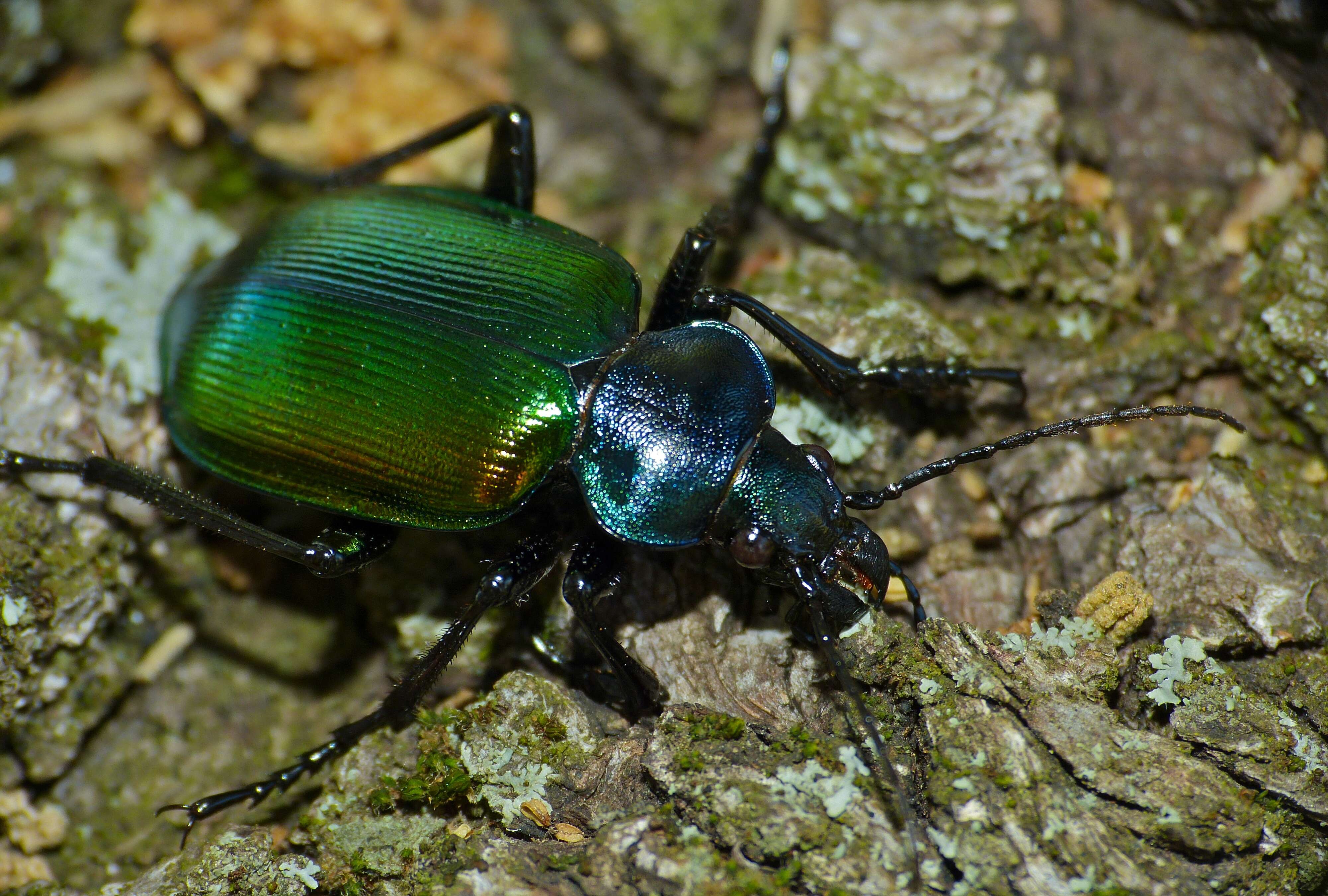Phylum: Arthropoda LATREILLE, 1829 (arthropods, Gliederfer)Subphylum: Hexapoda BLAINVILLE, 1816 (Sechsfer)Class: Insecta LINNAEUS, 1758 (insects, Insekten)Subclass: Pterygota LANG, 1888 (Fluginsekten)Infraclass: Neoptera MARTYNOV, 1923Order: Coleoptera LINNAEUS, 1758 (beetles, Kfer)Suborder:Adephaga SCHELLENBERG, 1806Family: Carabidae LATREILLE, 1802 (ground & tiger beetles, Laufkfer)Subfamily: Harpalinae BONELLI, 1810 Tribus: Harpalini BONELLI, 1810Subtribus: Ditomina BONELLI, 1810Genus: Eocarterus W. STICHEL, 1923Eocarterus amicorum WRASE, 1993[det. F. Boetzl, 2019, based on this photo]Spain, Andalusia, Cdiz: vic. Grazalema, Paso El Boyar, ca. 1000m asl., 10.04.2012andalucia0311
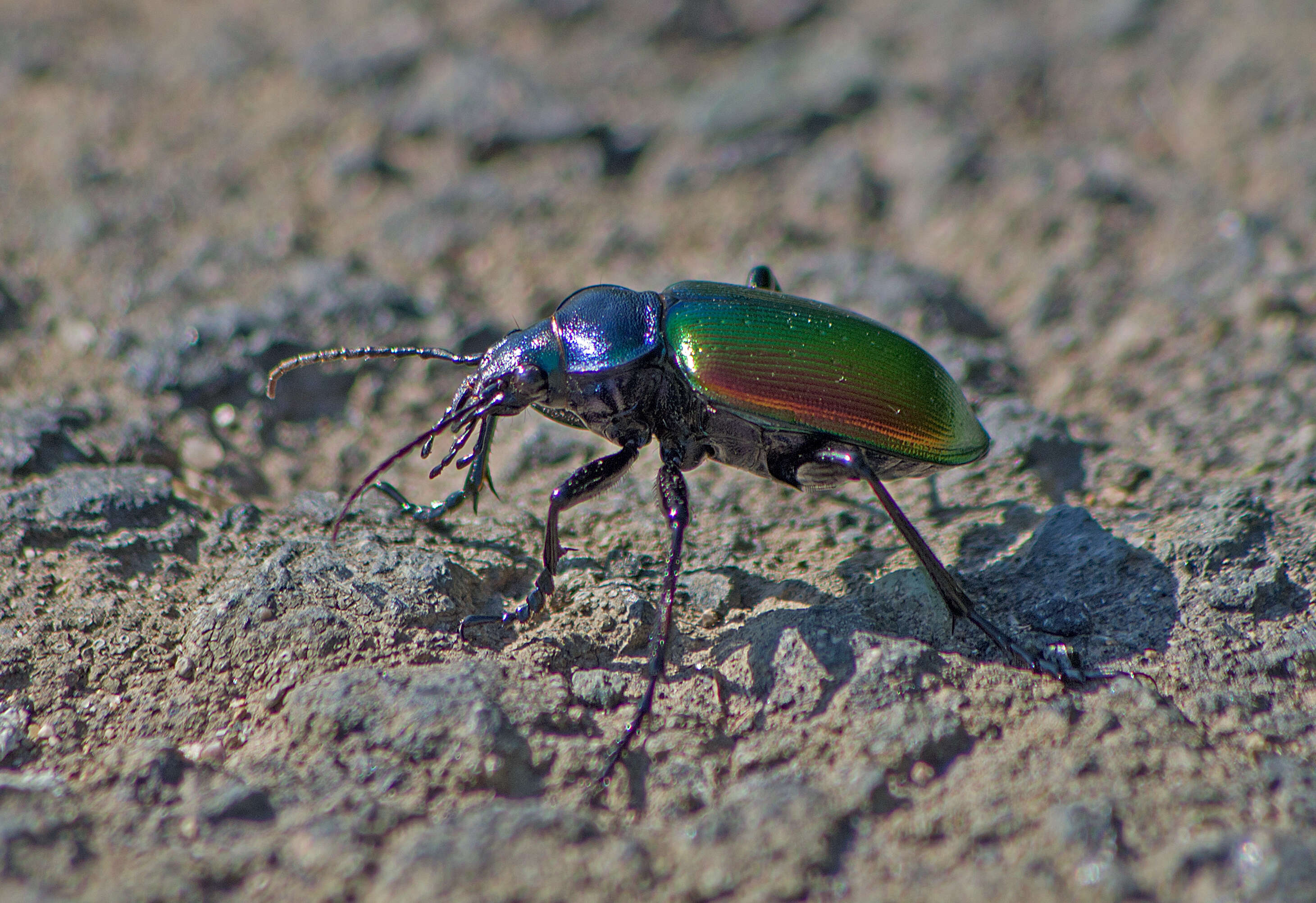
The name Calosoma is from greek: (kalos) - beautiful, (soma)- body.Distribution - Europe, West Asia, Caucasus, Siberia, North Africa, North America (introduced).At the daytime forest caterpillar hunter hide under stones and logs or in other secluded places, and when disturbed, they emit a protective brown liquid with an unpleasant odor. This ground beetle is a voracious consumer of caterpillars during both its larval stage and as an adult, and, unlike other ground beetles, easy climb on the trees and fly well. Adults grab the caterpillars by the middle of the back and easy kill them in a few seconds, regardless of size. During the season, one beetle can destroy, according to various data, 200-300-400 gypsy moth caterpillars. Larvae of forest caterpillar hunter do not often climb trees, and tend to prey on the larvae and pupae that remain on the ground, but it also consume during the season about 60 larvae and 15-20 pupae. The oldest descriptions of Calosoma appeared in 1736, made by versatile French scientist Reaumur in Paris; in those days the beetles were known under the general name of "scarabs." Reaumur commonly associated with the invention of the thermometer and alcohol and did not stick temperature scale, but it is first and foremost entomologist: at the end of life, leaving the mathematics and physics, for 8 years (1734-1742), he produced a series of memoirs, six-volume work devoted almost entirely to insects, under the title Mmoires pour servir l'histoire des insectes ". Recognized for its high accuracy, the treaty is shown 267 large folding plates finely engraved on copper illustrate caterpillars, butterflies, flies, grasshoppers, bees and wasps in their midst natural. The idea of the pest using the beetle apparently goes back to the Raumur. Reaumur said that the nature, give to many insects excessive fertility, and at the same time took care of that they do not multiply; for this purpose it has created other animals destroy them. Forest caterpillar hunter was used for the biological control of insect pests of the gypsy moth (Lymantria dispar) and yellowtail (Euproctis chrysorrhoea, Nygmia phaeorrhoea) in the United States. In the years 1905-1910 4046 adult beetles Calosoma sycophanta were taken to the New England states from Europe. The results obtained in New England were so promising that between 1913 and 1918 1000 adults were introduced into California. The above further increased animals have spread rapidly in North America. Included in the Red Data Book of the USSR, the Red Book of Russia (II category - decreasing population), Red Book of Ukraine. Included in the European Red List. - , , , , , (). , , , . , , , , , . , . , , 200-300-400 . , , , , , 60 15-20 . Calosoma, - , 1736 ; "". , : , , 8 (1734-1742) , , , Mmoires pour servir l'histoire des insectes. , 267 , , , , , . , -, . , , , , ; , . - (Lymantria dispar) (Euproctis chrysorrhoea, Nygmia phaeorrhoea) . 1905-1910 4046 Calosoma sycophanta . , 1913-1918 1000 . , (II ), . .

